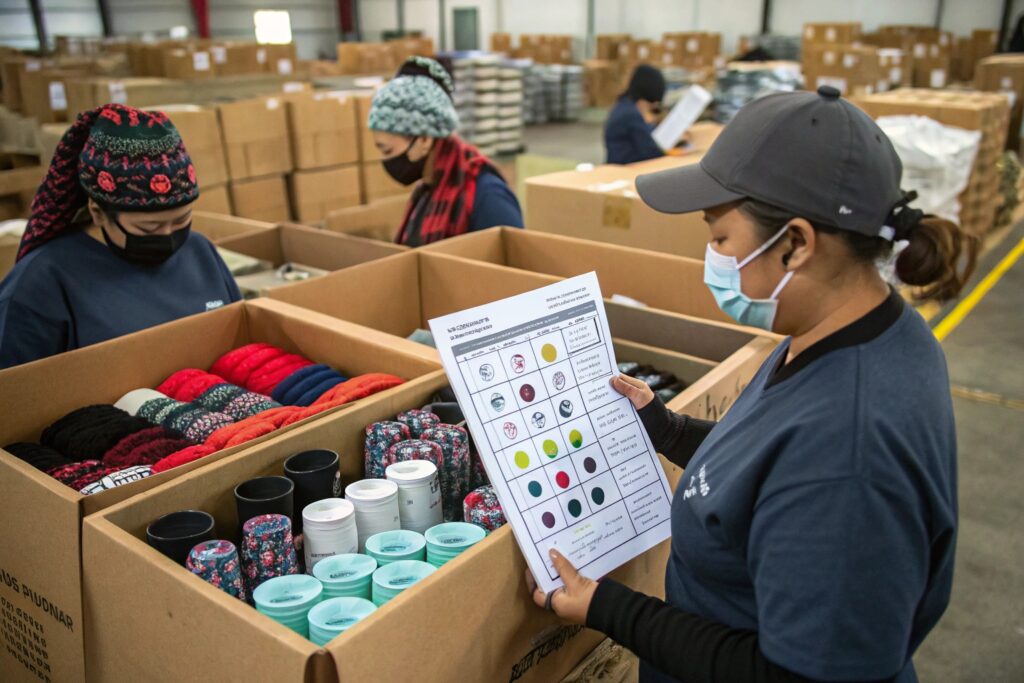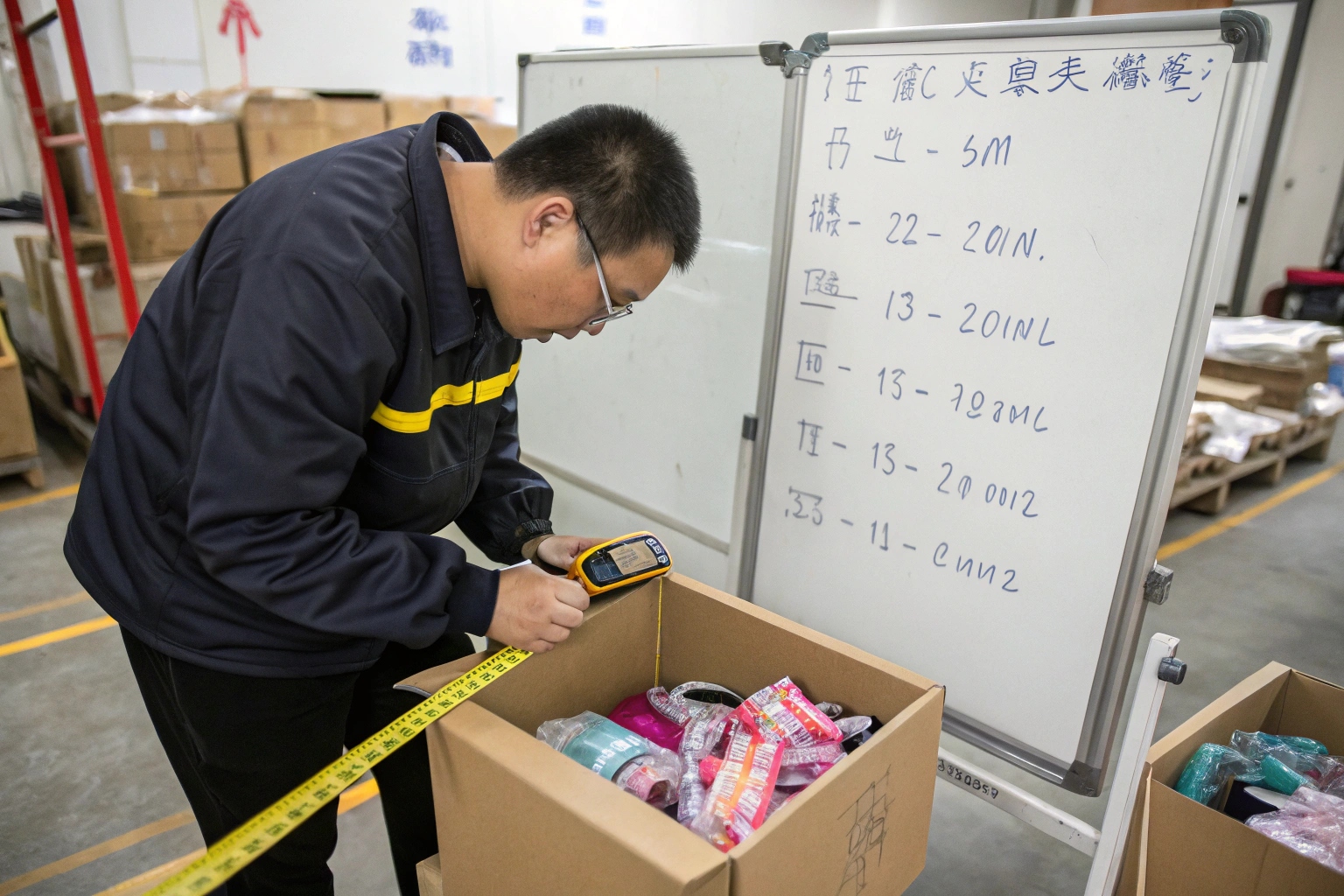You’ve packed your boxes of hair ties, belts, or scarves and received a freight quote—but the pricing is based on CBM, not weight. If you're not calculating CBM right, you could be overpaying for air or ocean space.
CBM stands for Cubic Meter, and it measures the space your cargo occupies. To calculate CBM, multiply the box's length × width × height in meters. For multiple boxes, multiply the CBM of one by the total quantity.
At AceAccessory, we help clients optimize both volume and weight shipping—especially for light, small accessories like hair ties that take more space than mass. Here’s a complete guide to calculating it yourself.
How do you calculate CBM of multiple boxes?
Shipping one carton is easy—but if you’re sending dozens of boxes, understanding how the total CBM is calculated can help you reduce freight costs.
To calculate CBM of multiple boxes, first find the CBM of a single box, then multiply by the number of boxes. Always convert dimensions from cm to meters before multiplying.

Example: Hair Tie Shipment
Let’s say each carton measures:
- Length = 60 cm (0.60 m)
- Width = 40 cm (0.40 m)
- Height = 30 cm (0.30 m)
Each box CBM = 0.60 × 0.40 × 0.30 = 0.072 CBM
If you’re shipping 50 boxes:
Total CBM = 0.072 × 50 = 3.6 CBM
Tip:
Make sure to include outer packaging (tape, padding) when measuring. Freight forwarders measure based on actual outer dimensions.
What is the formula for CBM in shipping?
No matter what you’re shipping—hair ties, caps, mugs, or scarves—the formula remains the same. But make sure you’re using meters, not centimeters or inches.
CBM = Length (m) × Width (m) × Height (m). This formula calculates the cubic space your box takes up in a container or pallet.

Standard Box CBM Formula
| Input | Unit | Example (cm) | Converted (m) |
|---|---|---|---|
| Length | meters (m) | 50 | 0.50 m |
| Width | meters (m) | 30 | 0.30 m |
| Height | meters (m) | 25 | 0.25 m |
| CBM per box | — | 0.50×0.30×0.25 = 0.0375 |
CBM Conversion Chart (For Quick Ref)
| CM Dimensions | CBM per box |
|---|---|
| 50×40×30 | 0.06 |
| 60×40×40 | 0.096 |
| 45×35×25 | 0.0394 |
Use this formula even if you’re shipping accessories in irregular shapes—just measure the max points of the carton.
How do you calculate case cube for shipping?
“Case cube” is another way to say “CBM per carton”—and it’s especially useful when comparing packing efficiency across products like headbands, scarves, or belts.
To calculate case cube, measure the outer dimensions of the shipping case in meters and use the standard CBM formula: Length × Width × Height.

Example: Bulk-Packed Hair Ties
Carton Size: 55 cm × 35 cm × 25 cm
Converted: 0.55 × 0.35 × 0.25 = 0.0481 CBM
If you fit 1,000 hair ties in one case:
- You’re shipping 20 cases → 0.0481 × 20 = 0.962 CBM total
- If you’re charged $100 per CBM → $96.20 freight cost
Why Case Cube Matters?
- It helps you compare how efficiently different accessories pack.
- It lets you predict freight costs even before production.
- It allows us to suggest repacking or re-cartoning for better container space usage.
At AceAccessory, we often help clients re-optimize their cartons for LCL shipments, reducing their shipping CBM without altering unit count.
How to calculate 1 CBM 333 kgs?
This is a common freight question—especially when calculating chargeable weight in air freight or dimensional weight in express shipping.
1 CBM = 333 kg is a freight conversion ratio used to determine whether your shipping cost is based on actual weight or volumetric weight, mostly for air freight.

Freight Billing: Actual vs Volumetric Weight
| Mode | Formula Used | Billing Basis |
|---|---|---|
| Air Freight | Volume (CBM) × 167 = Volumetric kg | Charged on whichever is higher: actual or volumetric |
| Express | Volume (cm³) ÷ 5000 = Volumetric kg | Same principle |
| Ocean Freight | Typically billed by CBM, not weight | Less sensitive to weight unless overweight |
Example: Shipping Lightweight Hair Bows (Air Freight)
- Box size: 60 × 40 × 40 cm = 0.096 CBM
- 0.096 × 167 = 16.03 kg volumetric weight
- Actual weight = 7 kg
You’ll be charged as if it weighs 16.03 kg because of the bulk. That’s why accessories with high volume but low weight (like scarves or clips) can cost more via air unless CBM is optimized.
Conclusion
Understanding how to calculate CBM is key when shipping hair ties and other accessories from China. With the right measurements and planning, you’ll avoid surprises, keep freight costs in check, and make smarter shipping decisions. At AceAccessory, we’re always ready to help you optimize your packaging and reduce your CBM.










